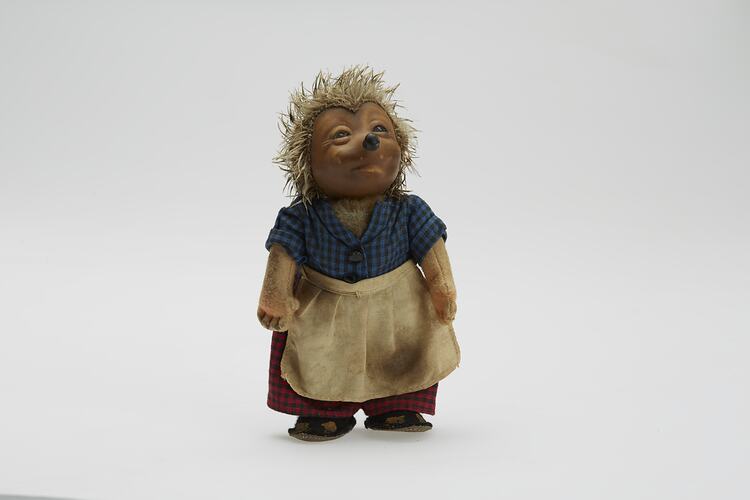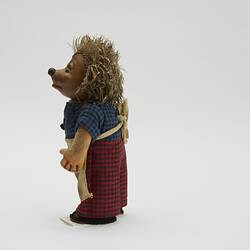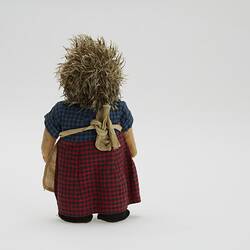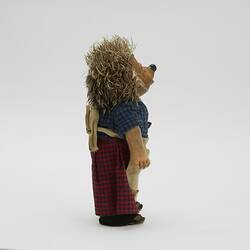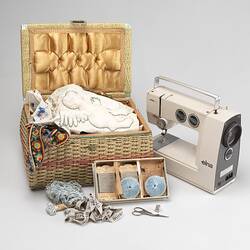Summary
Hedgehog doll in female dress, originally seated on a miniature wooden rocking chair. It was owned and used by Mirka Mora in her art studio in Tanner Street Richmond from the year 2000 when Mirka located there after having lived in an number of residences and studios in Melbourne cbd, Toorak, and St Kilda. These items were part of a group of small dolls, prams and furniture stored in a timber wine box. The hedgehog was positioned on the rocking chair when acquired by the Museum but it is not clear whether this was done by Mirka herself.
This is one of a collection of artist's materials, sewing equipment, clothing and personal items relating to the life and work of Melbourne iconic artist Mirka Mora, sourced from her Richmond artist studio in 2019.
Physical Description
Toy hedgehog has a plastic head, cloth body and is wearing a blue and black checked shirt, red and black checked skirt, sandals and white apron.
Significance
Statement of Historical Significance:
There are few names as synonymous with Melbourne's cultural and artistic life as Mirka Mora. Artist and café and restaurant owner, her larger than life personality and her very accessible and public art dominated Melbourne's cultural landscape for over 50 years. Mirka embodied the spirit of bohemian Melbourne for decades and this collection will enable us to be able to present this history in an engaging and tangible way. The material represents a migrant, cultural and artistic life, beyond artworks, and bring the personal side of Mirka to life. It provides an insight into Mirka's artistic practice and personal life. Mirka was a post World War II migrant and a leader in the formative years of Melbourne artistic and cultural urban development. This collection demonstrates her artistic processes, reveals her influences and her style,
This collection also complements one of the migration collection's strongest sub-collections, the Immigration and Artistic Practice collection. This collection draws on artworks, materials, equipment, migration objects and oral histories to explore how Victorian migrant artist's adapt, develop and transform their artistic practice within a new social, cultural and artistic environment. It provides evidence of the richness provided to the documenting of migrant artist's lives, not just through their artworks, but through the materials showing how their practice evolved over time.
More Information
-
Collecting Areas
Migration & Cultural Diversity, Working Life & Trades, Clothing & Textiles, Childhood
-
Original Owner
-
Classification
Migration, Settlement - cultural & social life, Tools & equipment
-
Category
-
Discipline
-
Type of item
-
Dimensions
100 (Width), 60 (Depth), 180 (Height)
-
Keywords
Artists, Art, Painting Equipment, Sewing Baskets, Sewing, Dolls
